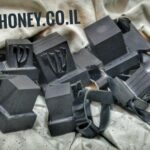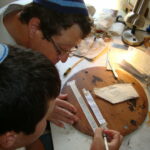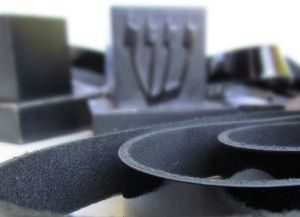Perashat Bo – Importance of Tefillin
Why is the Mitzvah of putting on Tefillin viewed as being so important? During a Bar Mitzvah it is a central part of the celebration. What is the purpose of donning Tefillin?
At the end of Perashat Bo we find two of the four paragraphs which we write on parchment and put into sturdy leather boxes which we call Tefillin. In its Tefillin oriented commandment the first of these paragraphs uses a different syntax than the others.
It should a be sign for you on your hand and a remembrance between your eyes, so that the teachings of G-d will be in your mouth since with a mighty hand G-d took you out of Egypt.
Our rabbis of blessed memory have said that the Mitzvah of Tefillin is equal to the entire Torah. (Torah Shelema) I believe that this Mitzvah is similar to tying a thread around your finger to remember something. By donning Tefillin we should remember the concepts which we learn from the Torah. A person who wears Tefillin should find it difficult to steal, yell at his mother, or think licentious thoughts all of which are forbidden and are especially mentioned with regards to wearing Tefillin.

In the Torah is a story about the first man who violated Shabat. There is a Midrash which remarks that Moshe Rabbienu said to G-d that the man sinned because it was Shabbat when it is forbidden to wear Tefillin. He had no reminder of G-d’s presence. Under an Ideal situation which has not yet occurred in Jewish History it is best to wear Tefillin all day. Some have said that this applies more to those who are working than those who are immersed in Torah Study.



















